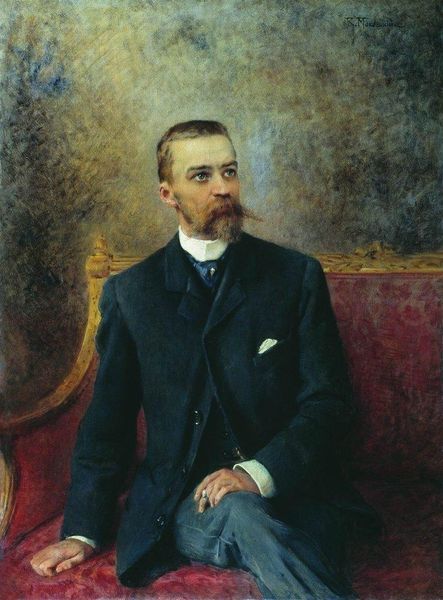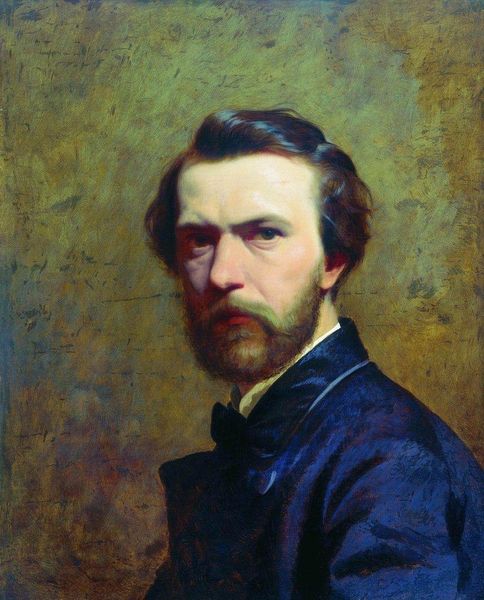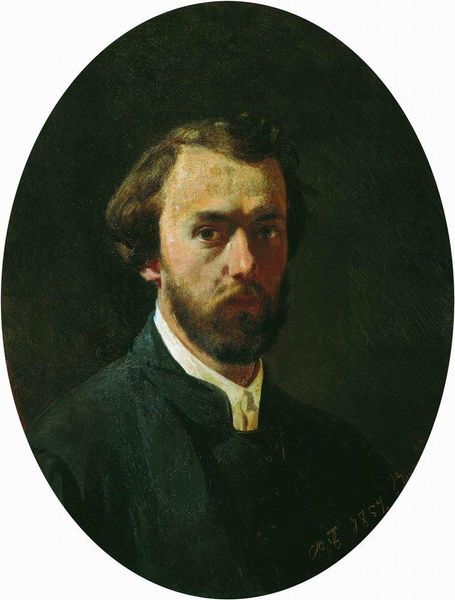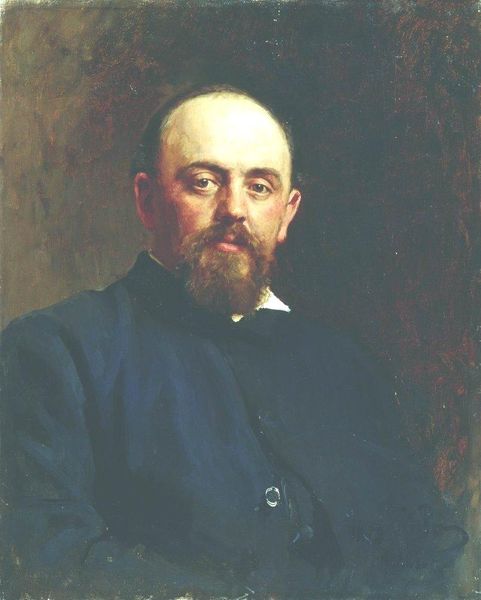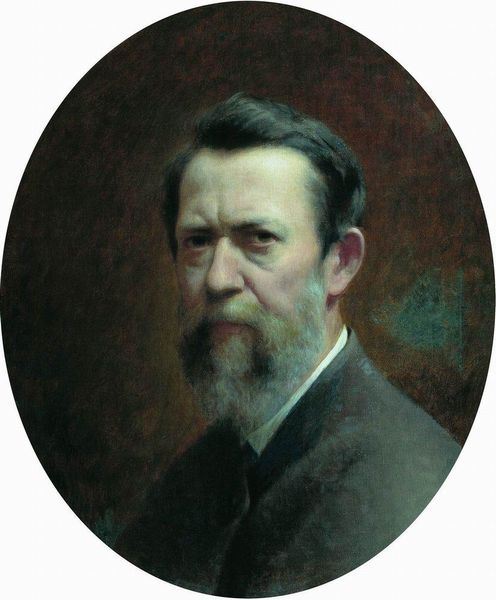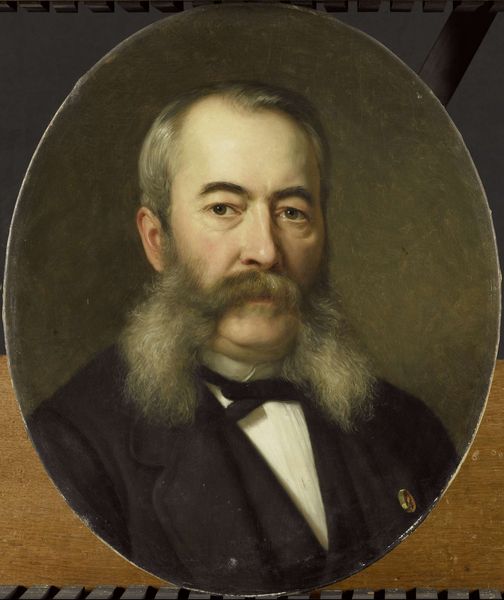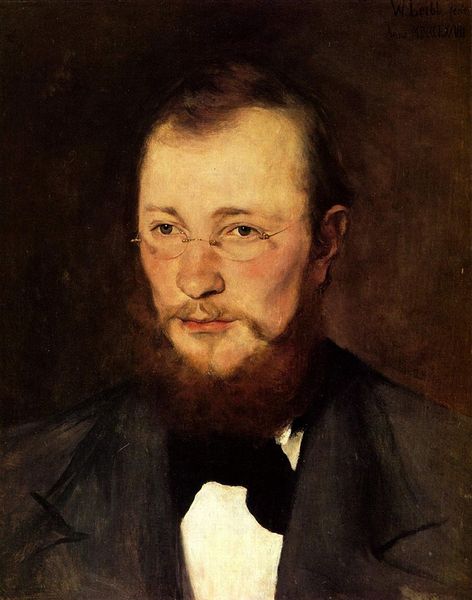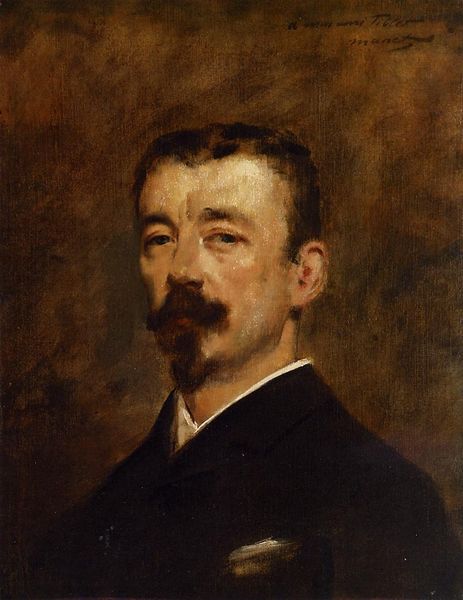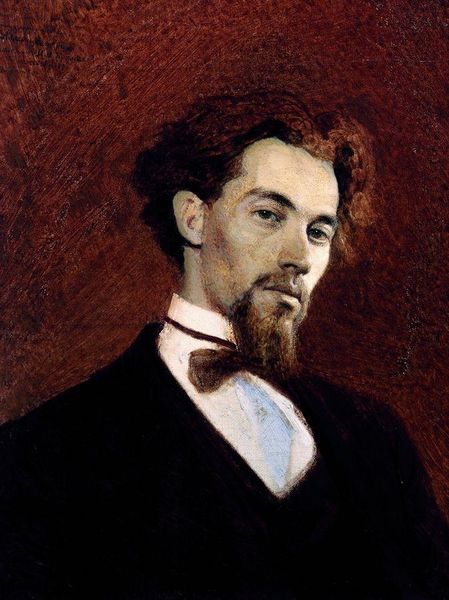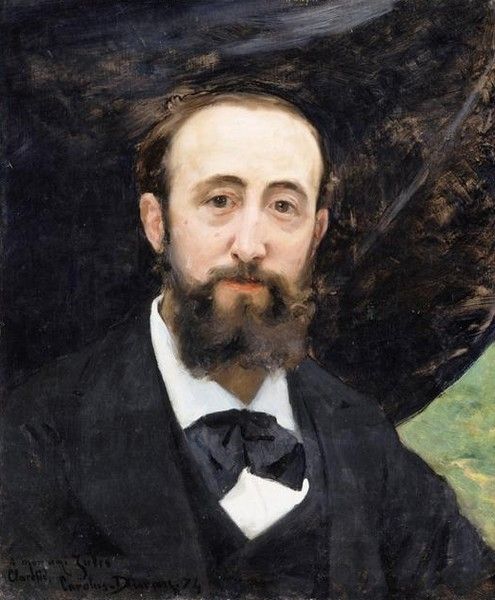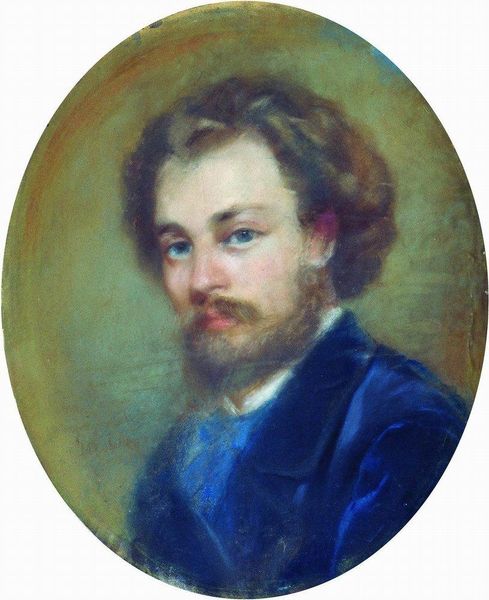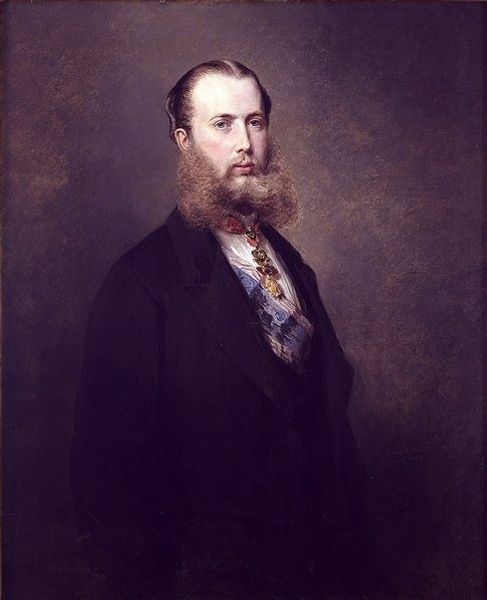
#
portrait reference
#
portrait head and shoulder
#
animal portrait
#
animal drawing portrait
#
portrait drawing
#
facial portrait
#
portrait art
#
fine art portrait
#
self portrait
#
digital portrait
Dimensions: 80 x 65 cm
Copyright: Public domain
Editor: This is Ilya Repin’s “Portrait of the Artist Vasily Polenov,” painted in 1877. There’s a kind of quiet intensity about it – Polenov’s gaze is really direct. What can you tell me about the painting? Curator: Repin's portrait captures Polenov not merely as an individual, but as a symbol of the evolving Russian intelligentsia. The direct gaze you noted speaks volumes. In the context of late 19th-century Russia, marked by Tsarist autocracy and burgeoning revolutionary sentiment, portraiture became a tool for exploring the psychology and social role of the individual. Polenov, as a fellow artist, represents a specific segment of society: educated, often politically liberal, and deeply invested in shaping Russian national identity through art. Editor: So, you're saying it's more than just a likeness? Curator: Precisely! The subtle, almost muted color palette, contrasted with the piercing quality of Polenov's eyes, suggests a tension between outward conformity and inner questioning. We might consider how Repin, later celebrated as a Social Realist, uses this early portrait to hint at the social and political anxieties simmering beneath the surface of Russian society. How do you see his position represented, perhaps through his clothing or bearing? Editor: Well, his clothing is dark and formal, maybe suggesting he's part of the establishment, but his gaze feels…challenging? Curator: Exactly! That tension is key. It invites us to think about the complexities of artistic identity in a repressive environment. Ultimately, the portrait serves as a powerful document of a specific historical moment and the role of art within it. Editor: I never would have seen that on my own! It's interesting how a portrait can hold so much history. Curator: Indeed. It shows us that art is not made in a vacuum, but rather is entangled in the cultural and political landscape of its time.
Comments
No comments
Be the first to comment and join the conversation on the ultimate creative platform.

